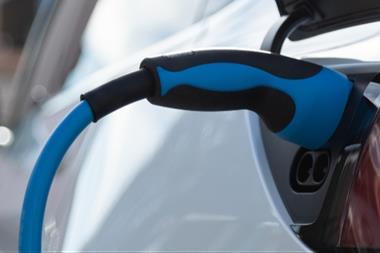Today’s convenience stores face growing pressure to evolve amid the ramped-up expectations of global consumers, and c-stores that fail to innovate are at risk of falling behind, delegates were told at this year’s annual convention of the National Association of Convenience Stores in Las Vegas.
In a joint presentation, Joseph Bona, president of branded environments at brand agency and retail design consultancy CBX, and Dan Munford, managing director of UK-based convenience and petroleum retail strategy specialist Insight, said strategic insight had never been more important, because the retail world was changing so fast.
Those changes extend well beyond the fallout from the rise of ecommerce, explained Bona: “For example, the phenomenon of channel-blurring has led to a proliferation of competitors from outside the traditional c-store sector. Whether you’re talking about c-stores, QSR and fast-food chains or pharmacies and grocery stores, all of these retail categories are chasing the same consumers. C-stores must raise their game.”
In Europe and the United States alike, a growing number of c-store chains now aim to accomplish this by offering dramatically improved food offerings, often in sumptuous settings relative to the c-stores of the past, Munford said. He referred to a September 2014 report by Nielsen, which predicted that fresh foods would account for up to 50% of category sales in Europe’s next-generation c-stores.
Meanwhile, US-based chains such as Wawa, Sheetz and Rutter’s are developing increasingly sophisticated store designs centred on higher-quality food, said Bona: “These chains understand that time-pressed consumers crave healthier and better offerings in both the foodservice and grocery areas. Indeed, in one Technomic survey, a sizeable majority - 64% - said eating healthily was important. Earlier this year, two-fifths of consumers told the research firm they would visit convenience stores for prepared foods more often if freshness and quality were improved."
However, he said the trick was not just to offer higher-quality food, but also to elevate the overall customer experience: “Coffee shops in the UK, for example, are booming, not because consumers are drinking more coffee, but because they fill a ‘social venue’ gap in society - one that used to be met by pubs. Today’s c-stores have the opportunity to do the same thing.”
Adding to the pressure is the reality that brick-and-mortar retail in general is becoming more disciplined, articulate and differentiated, largely in response to ecommerce. In this context, c-stores that fail to innovate are at risk of falling behind. “What are you doing to become more differentiated?” Bona asked the audience. “What improvements are you making in the area of customer service? Through innovation, you can actually transcend old perceptions of what convenience means and forge a new paradigm.”
With respect to foodservice, Bona and Munford noted, a central issue facing the industry is whether to develop their own foodservice brands or to engage in brand partnerships. “In Europe, two of the most interesting partnership models to date are the Euro Garages ‘convenience malls’ and the ‘brand implant’ model being developed by Tesco,” Munford related. “The Euro Garages format is essentially a branded partner offer. Picture a hip-looking, corrugated building alongside the road, with the likes of Starbucks Coffee or Subway inside.”
Euro Garages has already rolled out hundreds of these locations, Munford said. For its part, Tesco has partnered with foodservice brands such as Harris & Hoole, Giraffe Café, Euphorium and Fred’s to good effect. “This use of the ‘friendly culture’ of popular partner brands was a savvy move that is proving popular with consumers,” Munford said. Likewise, European convenience retailer SPAR has partnered with independent UK retailer Eat17 to create a retail destination that combines convenience, restaurant and grocery.
In the conclusion Bona said: “In the old days, people went to c-stores simply because they were easy to shop,” he said. “Today, they’re looking for something more. They want a pleasant environment, high-quality food, convenient locations, and, yes, good deals. The challenge moving forward is to exceed these rising expectations on all fronts.”






























No comments yet